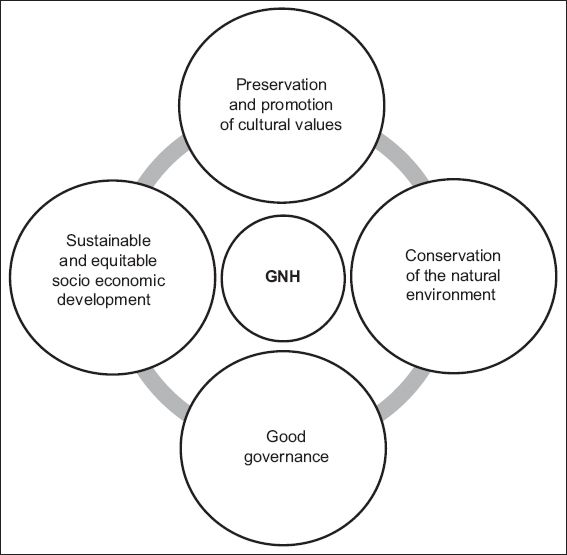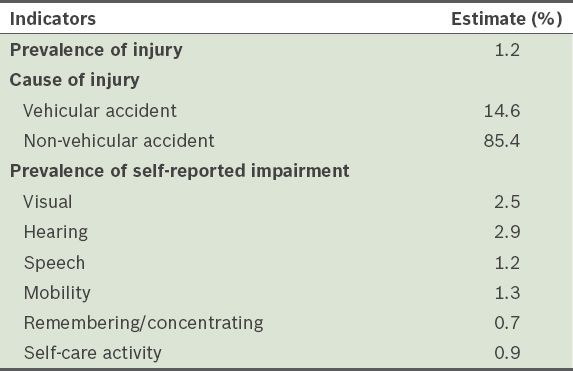INTRODUCTION
Bhutan is a small landlocked country measuring 38,394 km2,(1) with a population of 745,153.(2) It recently celebrated 108 years of monarchy; however, the country introduced its first constitution in 2008.(3) When the current King of Bhutan, Jigme Khesar Namgyel Wangchuck, was crowned in 2008, Bhutan was transformed into a unitary parliamentary constitutional monarchy.(2) The second and reigning Prime Minister of Bhutan, and the political head of the country, is Tshering Tobgay. Bhutan is divided into three regions (Western, Central and Eastern) and has 20 districts called dzongkhags. Bhutan’s currency is the ngultrum (Nu) and its value is on par with and pegged to the Indian rupee. The major sectors that contribute to Bhutan’s economy are tourism, agriculture, forestry and the sale of hydroelectric power. According to the 2011 National Health Accounts, its gross domestic product (GDP) per capita was USD 2,121.(2) Bhutan is known for measuring its happiness with the Gross National Happiness (GNH) Index.
The term was coined by the fourth king of Bhutan, Jigme Singye Wangchuck, in 1972 to show his commitment toward building the economy in a sustainable manner, based on Buddhist spiritual values and well-being.(4) The Constitution of Bhutan also expresses the importance of GNH, as it states “the state shall strive to promote those conditions that will enable the pursuit of Gross National Happiness”.(5) GNH has four underpinning pillars and nine domains (
Fig. 1
Flowchart shows the four pillars of Gross National Happiness (GNH).

In 2010, the following nine domains and their respective indicators were developed:(3)
-
Psychological well-being: life satisfaction, positive emotions, negative emotions, spirituality.
-
Standard of living: assets, housing, household income per capita.
-
Good governance: government’s performance, fundamental rights, services, political participation.
-
Health: mental health, self-reported health status, healthy days, disability.
-
Education: literacy, schooling, knowledge and value.
-
Community vitality: donations (time and money), community relationships, family, safety.
-
Cultural diversity and resilience: speak native language, cultural participation, artistic skills and Driglam Namzha (social etiquette).
-
Time use: work and sleep.
-
Ecological diversity and resilience: ecological issues, responsibility towards environment, wildlife damage (rural), urbanisation issues.
The planning commission of Bhutan was renamed the GNH Commission on 24 January 2008 and new responsibilities were assumed to ensure that GNH would be firmly embedded in policies. As the convergence point for all prospective plans/projects and policies pertaining to Bhutan, GNH is reflected in terms of five-year plans that are implemented by various ministries. The 'Five-Year Plan' system was introduced in 1961 by the third King of Bhutan, Jigme Dorji Wangchuck; its aim was national economic development. According to the system, the ten ministries of Bhutan and other governmental agencies focus on sectoral development and submit their plan to the GNH Commission for further scrutiny. The GNH Commission assesses the plans based on its individual objectives, National and Sectoral Key Result Areas, and respective Key Performance Indicators, all of which contribute toward the achievement of the four pillars of GNH. The approved plan is then executed by various sectors and monitored in the following five-year plan. Approval from the GNH Commission also applies to new businesses in the private sector.
In 2010, a GNH survey found the following:(4)
On average, men are happier than women.
Of the nine domains, Bhutanese have the most sufficiency in health, followed by ecology, psychological well-being and community vitality.
Urban areas tested better for health, living standards and education, while rural areas tested better for community vitality, cultural resilience and good governance.
Happiness is higher among people with primary education or above than among those with no formal education. However, higher education did not greatly affect GNH.
The happiest people by occupation include civil servants.
Unmarried people and youth are among the happiest.
HEALTHCARE
Healthcare in Bhutan falls under the Ministry of Health (MoH). The MoH aims to achieve universal health coverage by improving access to quality and equitable health services, strengthening preventive, promotive, curative, rehabilitative and palliative health services, and promoting efficiency and effectiveness in the financing and delivery of health services.(6) Its vision is “a nation with the best health”.(7) Basic public healthcare is free, as reflected in the Constitution of Bhutan: “the State shall provide free access to basic public health services in both modern and traditional medicines”.(5) Healthcare is delivered to the citizens of Bhutan through 32 hospitals and 205 basic health units. There are 203 doctors and 799 nurses who cater to its population of 745,153.(2)
The 2011 National Health Accounts revealed that the public health expenditure was 6.27% as a percentage of total government expenditure and 3.23% as a percentage of the country’s GDP.(8) From 2012–2013, an estimated Nu 3,965 million was spent on the Bhutanese health system, compared to the Nu 3,587 million spent from 2011–2012. In the 2014–2015 fiscal year, the amount received by the MoH was about 3%–4% of the country’s annual GDP.(4) The government is a major source of health financing in Bhutan, contributing to about 88% of the total expenditure.(8)
Table I
Budget allocation for medical supplies procurement from 2011–2014 (in million ngultrums).

In Bhutan, health has always encompassed both physical and mental aspects; this view is reflected in the famous saying, “lus lu natsha med, sems lu sdugsngal med “ (no illness in body and no stress in mind).(4) The statement conforms to the World Health Organization’s definition of health as “a state of complete physical, mental and social well-being, and not merely the absence of disease or infirmity”.(4) Of the nine domains of GNH, one relates to health. It was also measured by the MoH during the 2012 National Health Survey (
Table II
National Health Survey 2012 findings on health-related indicators in the Gross National Happiness Index.(10)

Typically, about 20%–30% of the MoH’s total annual budget is allocated to the procurement of medical supplies; as this is a small amount, efficient and effective resource allocation is required for financial sustainability. Bhutan is currently undergoing rapid health and social transitions.(9) Across the world, rapid changes are occurring in terms of new health technologies, the ever-improving capability of medical personnel and, in turn, the demand for newer and better health technologies. Furthermore, the MoH is spending millions in patient referrals outside of the Kingdom of Bhutan. These challenges can all be tackled with the right technology, in the right place, for the right patient and at the right time. Nonetheless, purchasing 'everything under the sun' would pose a threat to financial sustainability. Consequently, evidence-based resource allocation appears to be the only solution to address this gap. This is where the Health Technology Assessment (HTA) plays a role to attain evidence-based health financing.
In Bhutan, the HTA is in its nascent stage. The first evidence-based HTA in Bhutan was performed on 29 March 2013.(11) The HTA Guideline, developed in 2013 by the Essential Medicines and Technology Division, is used to assess proposals for the introduction of new health technologies in a systemic manner. The proposals are assessed based on the following attributes: technical properties, safety, efficacy, cost-effectiveness, feasibility, and social, legal, ethical and political impact. Most of the evidence-based HTAs comprise literature reviews, situation analysis and in-house cost analysis methods. The findings of these assessments serve as recommendations for policymakers and are also shared with relevant agencies and stakeholders.
In conclusion, although the HTA is a small component of evidence-based healthcare financing, it has the potential to contribute greatly to financial sustainability. Furthermore, it may eventually contribute to GNH.


